Digital Wellbeing - Tools to Balance Tech and Life
I have listed a collection of digital wellbeing resources, including online training, apps, settings, and more.
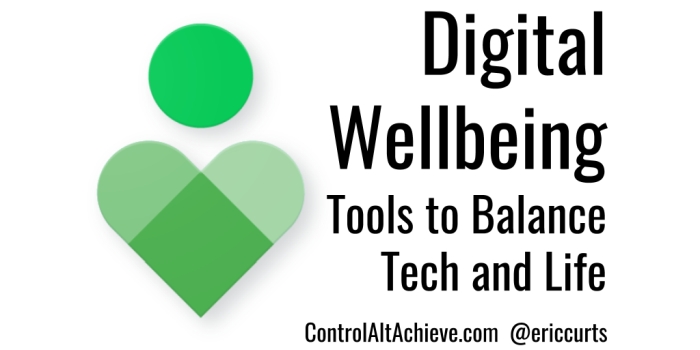
As much as I love technology, it can still be a challenge to balance its use with the rest of my life. On one hand technology allows me to earn a living, to connect with friends around the world, to find the answer to most any question, and to enjoy the latest bingeable show on Netflix. On the other hand, technology has the potential to consume more of my time than I realize. The challenge has always been finding that right balance.
A while back I wrote a blog post about that challenge, and how I felt I was falling on the wrong side of the tipping point. In the post "Full Bleed" I shared about the need for margin in our lives, and my attempts to reclaim a healthier balance.
Since that time I have seen more and more discussions online centered around the topic of Digital Wellbeing. Many of these posts have highlighted tools, resources, and settings we can use to help monitor our own technology usage, and make changes to make sure technology is a positive influence in our lives. These are important resources for us as adults and educators, as well as for our children, who are growing up in a time of digital ubiquity.
In the post below I have listed a collection of digital wellbeing resources, including online training, apps, settings, and more. I have grouped the resources into two broad categories, although some items can certainly fit into both:
- Resources for Reducing the Potential Negatives of Technology
- Resources for Increasing the Positive Benefits of Technology
I will continue to update and add to this list as time goes on, as this is a rapidly evolving topic. I encourage you to explore these resources, and use the comments at the bottom to suggest others to add. Together we can find the balance that is right for each of us, and use technology as a positive force in our lives and others.
Resources for Reducing the Potential Negatives of Technology
The first step in working toward digital wellbeing is understanding the potential negative effects of technology in our lives, and then working to manage our usage in a healthy way. In this section we take a look at several resources to help us and our students with this.
Monitoring Usage
A good first step toward digital wellbeing is to simply see how much time we are already spending on technology. We can have a difficult time estimating how much of our day we actually spend on social media, YouTube, Reddit, email, and such. Thankfully many apps are now providing us with options to view these statistics. Some of these apps also let you go a step further and set limits on usage.
1) Android's Digital Wellbeing
Google Play Store link
For Android users, Google has created the Digital Wellbeing app to help track and manage your technology use. At the moment this app is not available on all Android phones, but is expanding to more phones bit by bit. Features of the Digital Wellbeing app include:
- Reports on how frequently you use different apps, how many notifications you receive, and how often you check your phone.
- Daily app timers to set limits for how much you use apps.
- Wind Down mode for setting a schedule to fade your screen to Grayscale and turn on Do Not Disturb.
- Focus mode to hide notifications from specific distracting apps.
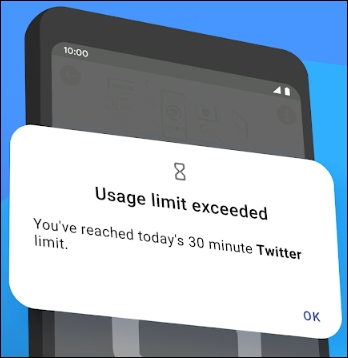
2) ActionDash
Google Play Store link
If your Android device does not support the Digital Wellbeing app yet, a great alternative is the ActionDash app. There is a paid version with even more features, but the free version is very useful and provides the following:
- Detailed reports on time spent using apps, app launches, notification, and unlocks.
- Focus mode to block specific distracting apps.
- Daily limits on the usage of specific apps.
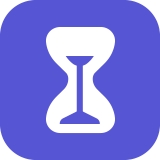
3) iOS Screen Time
Help page
For iOS users there is an app called Screen Time which provides reports on how much time you spend on apps, websites, and more, as well as setting daily limits on app usage by category.
Tech & Learning Newsletter
Tools and ideas to transform education. Sign up below.
4) YouTube
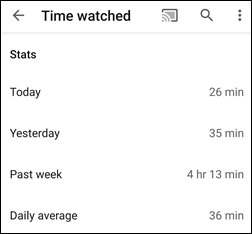
YouTube also has built in reports and settings to help you monitor and manage how much time you spend watching videos. To use this feature in the mobile app, do the following:
- Click your profile picture and then select "Time watched"
- You will now see your viewing stats.
- There is also an option to set a reminder to take a break from watching YouTube.
- And also a setting to turn off autoplay to help reduce binge watching.
Notifications
Another way to work on digital wellbeing is to manage the notifications we receive on our devices. It is wonderful that we can be kept up to date on the world around us, and in contact with those we care about, but there are times when it may be beneficial to temporarily turn off notifications or to at least restrict them to only what is critical.
Certainly this can be difficult as we battle against FOMO (our Fear Of Missing Out). This is that anxious feeling that we have to constantly be plugged in or else we will miss out on something important. Instead we want to be able to embrace some JOMO (the Joy Of Missing Out) where we can take a step away from our technology from time to time, and enjoy the people, the world, and the experiences right around us.
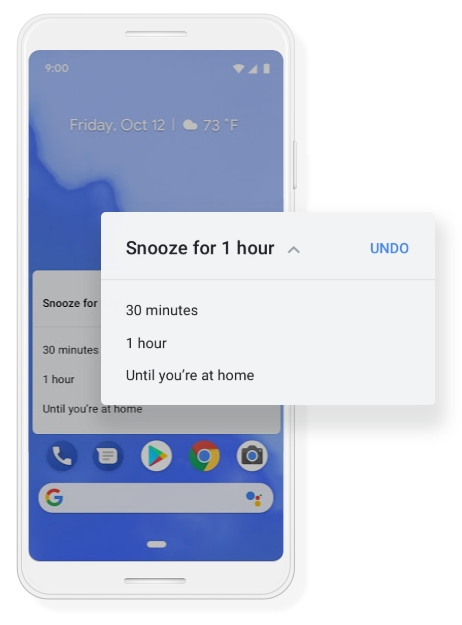
Depending on your phone, the settings and options for notification control will vary, but below are some general help resources for both Android and iOS devices.
1) Android
- Control notifications on Android - Help page
- Limit interruptions with Do Not Disturb on Android - Help page
2) iOS
- Use notifications on your iPhone, iPad, and iPod touch - Help page
- Use Do Not Disturb on your iPhone, iPad, and iPod touch - Help page
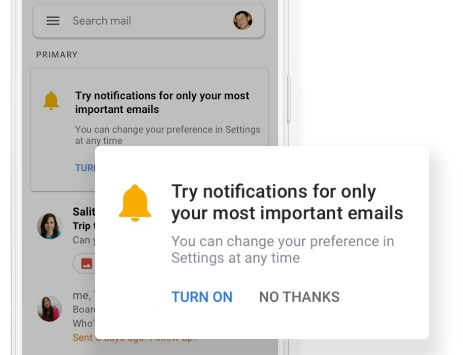
3) Gmail
You can also control how many notifications you get when you receive new email. One option is to request notifications for only messages listed as "High Priority". You can set this as follows:
- Open your Gmail app.
- Tap the "Menu" button.
- Scroll down and tap the "Settings" button.
- Choose your account (such as personal or work).
- Tap "Notifications".
- Choose the level of notifications you wish to receive, such as "High priority only".
Online Training
Several resources exist online to help you and your students learn more about digital wellbeing, reflect on the use of technology in your life, and work toward finding a healthy balance that is good for you. Below are some of these online training resources.
1) Google's Digital Wellbeing site
https://wellbeing.google
This site serves as the central hub for Google's efforts around digital wellbeing. You can find helpful videos and resources here including the following:
- Self-survey to reflect on digital habits - Website link
- Resources to focus your time with tech - Website link
- Resources to unplug more often - Website link
- Resources to minimize distractions - Website link
- Resources to find balance as a family - Website link
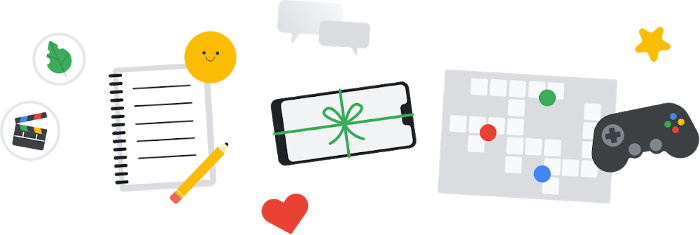
2) Applied Digital Skills - Build Healthy Digital Habits
Website link
Applied Digital Skills is a free online curriculum from Google that teaches tech skills, job skills, and life skills for students from upper elementary through high school, as well as adult learners. You can learn more about this resource in general in my earlier blog post on Applied Digital Skills.
There are hundreds of hours of videos and activities covering a wide range of topics, including a course on digital wellbeing. This online course, titled "Build Healthy Digital Habits" helps students explore their current use of technology, as well as discover ways to maintain a healthy balance of technology in their lives.
- Lesson 1 has the students create a journal to track and reflect on their digital and non-digital activities.
- Lesson 2 has the students create a pledge for digital wellbeing.
- Lesson 3 has the students share what they have learned about digital wellbeing with others through a poster, website, or slideshow.
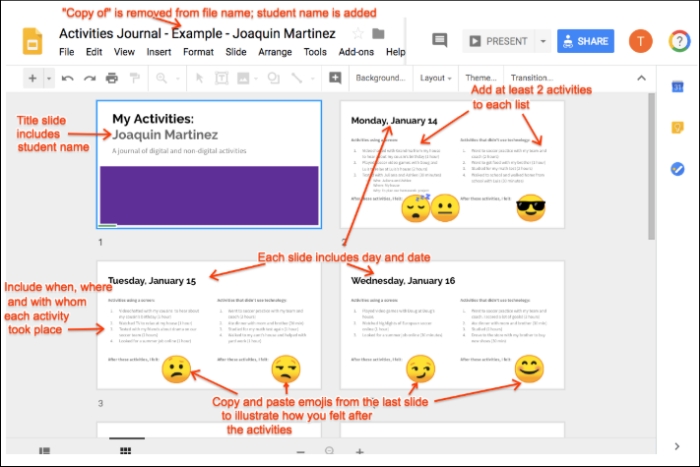
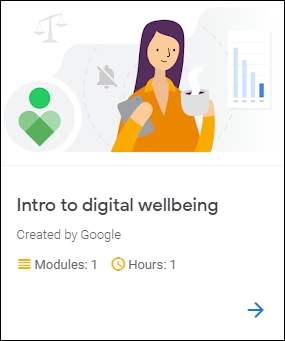
3) Digital Garage - Introduction to Digital Wellbeing
Website link
Another online course option is the "Introduction to Digital Wellbeing" course from Google's Digital Garage site. This is a much shorter course, but does a nice job of covering the basics and several resources for digital wellbeing.
The topics covered include:
- What is Digital Wellbeing
- Benefits of healthy use of technology
- Awareness of your tech usage
- Tools for Digital Wellbeing
Resources Increasing the Positive Benefits of Technology
In addition to reducing the potential negative effects from overuse of technology, we also want to look at the flip side to examine the positive impact technology can have on our wellbeing. In this section we will look at such tools and resources.
1) Breathing Exercises
Google Search link
If you run a Google search for "breathing exercise" you will get a 1-minute activity that takes you through several cycles of breathing in and out. This can be a helpful break for students and teachers to help promote mindfulness, relaxation, and calmness.
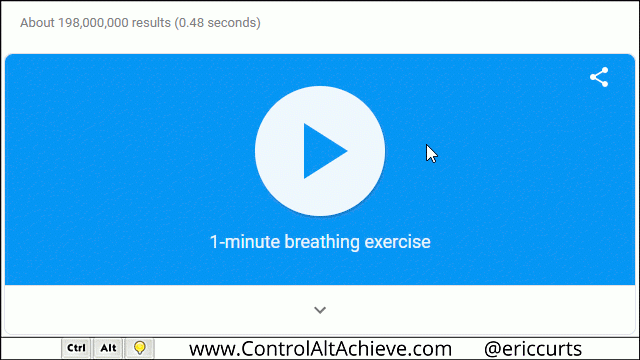
2) Ambient Audio
Blog Post link
What helps you focus when reading, writing, or getting work done? Do you need a totally silent room, or does some amount of ambient noise help you? For some people, students included, having sound in the background can actually help them focus better. This could include music, nature sounds, or just white noise. See my earlier blog post linked above for a collection of free websites that allow users to listen to a wide variety of ambient sounds, as well as create their own custom mixes.
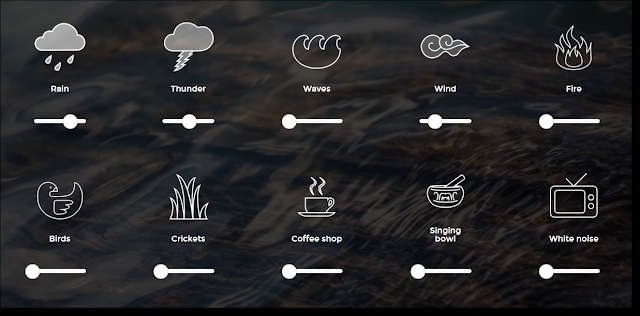
3) Passwords and Positive Self-Talk
Blog Post link
Positive self-talk can make a powerful impact in our day to day life, if we take the time to do it. One creative way to provide ourselves with edifying messages is to use our passwords. By using a passphrase that conveys a positive message or an encouraging reminder, we can build positive self-talk into our daily routine, every time we need to type in a password. See my earlier blog post linked above for more details and thoughts on this practice.
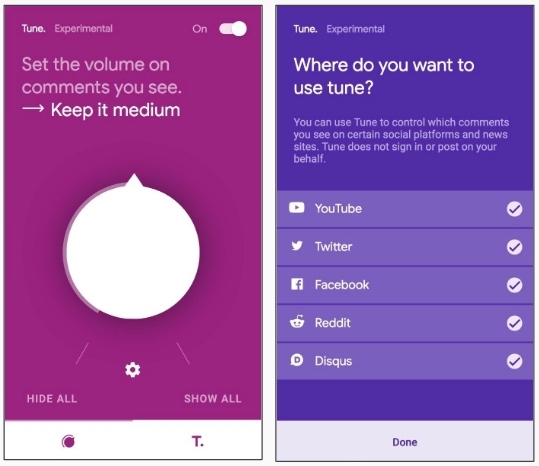
4) Tune
Chrome Web Extension link
Tune is a Chrome Extension that allows you to control the level of toxicity in the comments you view online for such sites as YouTube, Facebook, Twitter, Reddit, and more.
You simply turn the dial in the settings to adjust which comments you see, all the way from full comments to no comments in "Zen mode", and everything in between. Using AI, the extension hides comments that are more toxic than the level you set, but always with an option to click on the comment to see it if desired.
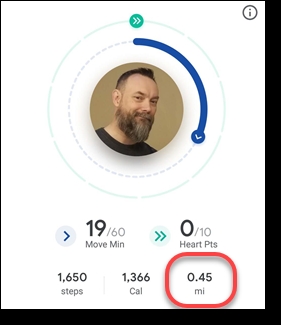
5) Google Fit
Blog Post link
Technology can also improve our wellbeing by helping us improve our health. There are lots of fitness tracking devices, but if you do not own one you can always just use the Google Fit mobile app for your phone.
The app will monitor your movement each day to help keep track of how many steps you have taken or other exercises you have completed. This is an easy and free way to promote health in body and mind.
Mobile app:
6) Wakelet Mindfulness Collection
Wakelet link
This is an excellent collection of additional mindfulness apps and resources collected by Angela Wojtecki and Annette Lang.
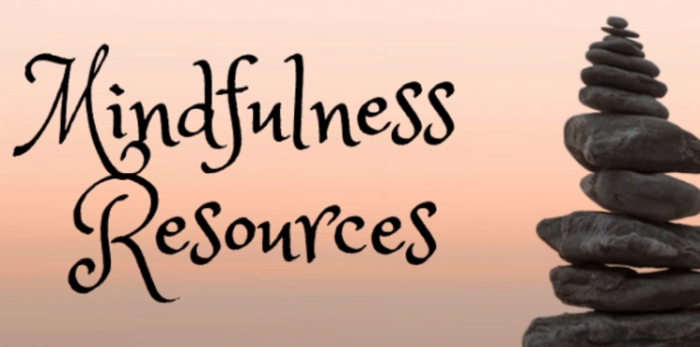
Conclusion
Technology can truly make a positive impact in our lives, but like any good thing (I am looking at you Ben and Jerry's Cinnamon Bun ice cream) we have to find balance for it. Hopefully the tools, settings, and resources shared above will help you to evaluate and manage your use of technology, so it improves your wellbeing in all areas of your life.
cross posted at www.controlaltachieve.com
Eric Curts is an education trainer and consultant with over 20 years' experience throughout the U.S. He is an authorized Google Education Trainer and a Google Certified Innovator. Read his blog at www.controlaltachieve.com and follow him on Google+ and @ericcurts on Twitter.
